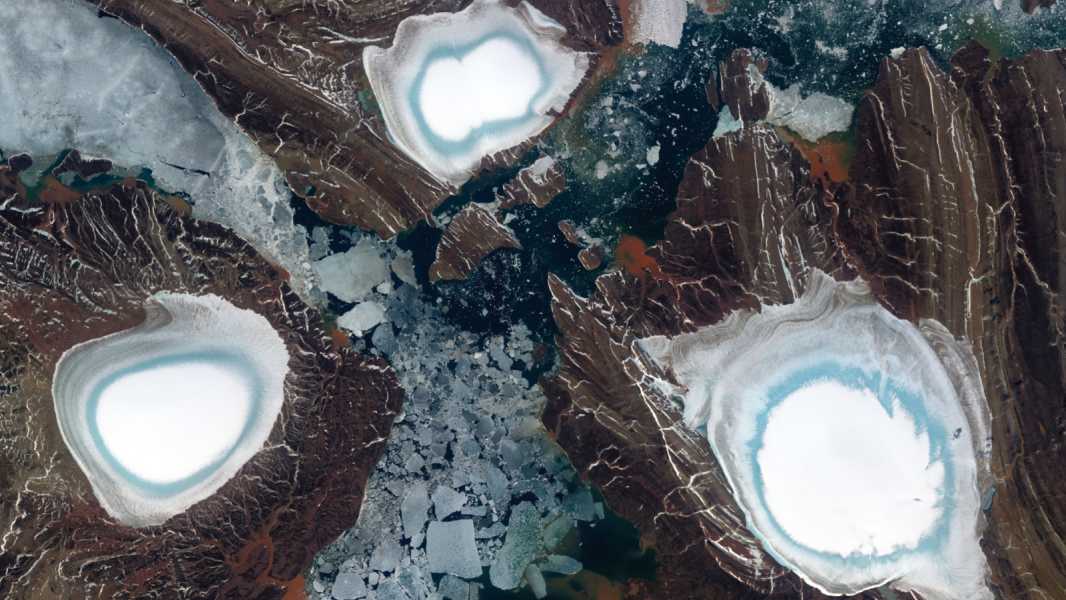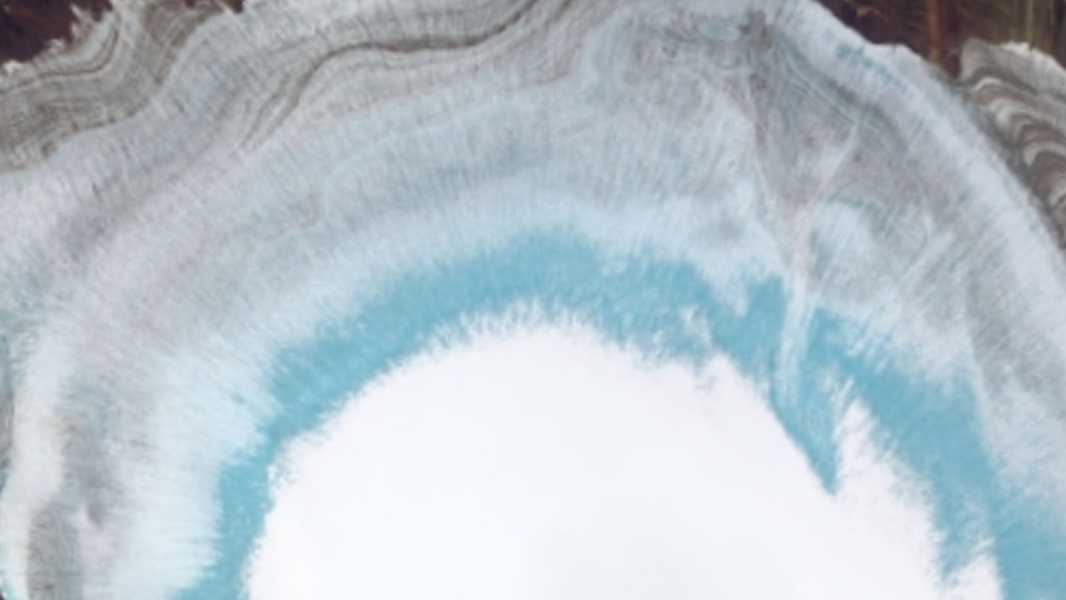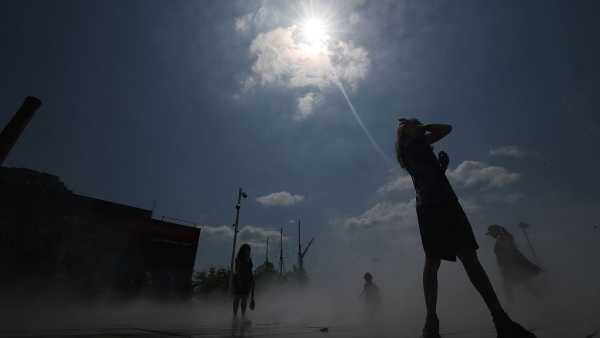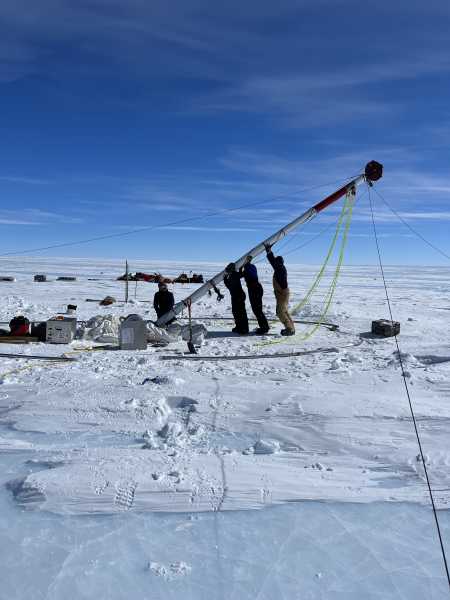
Three impressive ice caps located on three separate islands of the Severnaya Zemlya archipelago. (Photo credit: NASA Earth Observatory/Landsat/Joshua Stevens)
This stunning satellite image shows three lifeless islands in the Russian Arctic, offering a unique glimpse of the vibrant concentric rings of the region's ubiquitous ice caps.
The Severnaya Zemlya archipelago is a chain of islands belonging to Russia in the Arctic Ocean, covering an area of about 14,300 square miles (37,000 square kilometers) — roughly the size of Maryland — beyond the northernmost coastline of Siberia. The archipelago lies along the border between the Kara Sea and the Laptev Sea and includes four main landmasses: Komsomolets Island, Pioner Island, October Revolution Island, and Bolshevik Island.
According to the Encyclopedia Britannica, the region was only discovered in 1913, and its full exploration did not begin until several decades later, making it one of the last major archipelagos on Earth to be properly mapped.
This photo shows the connection of Komsomolets (center), Pioneer (left), and Oktyabrskoy Revolyutsii (right) islands, which are separated by just a few miles of ocean, according to NASA's Earth Observatory.
For most of the year, these islands are mostly covered in ice and snow, and are connected to each other by thick sea ice. However, for about two months each summer, temperatures rise above freezing, allowing some of the frozen water to thaw, revealing a barren landscape below. The only inhabitants are lichens and a few shrubs.
The densest and oldest ice persists during the summer months in the form of glaciers and ice caps, which cover about half the surface of the archipelago.

From a bird's eye view, the island's ice caps display stunning multi-colored rings.
The ice caps, which can reach heights of 820 feet (250 meters), are made up of multi-year ice, meaning that each winter new layers of snow are added to their icy peaks, and in the summer they also lose some ice to melting. Viewed from above, this cycle of melting and refreezing creates the magnificent concentric rings of color that are captured in this image, according to NASA Earth Observatory.
The Severnaya Zemlya archipelago is also home to Russia's largest glacier, the Academy of Sciences Glacier, which lies north of the photographed ice cap on Komsomolets Island. This enormous ice mass occupies
Sourse: www.livescience.com





